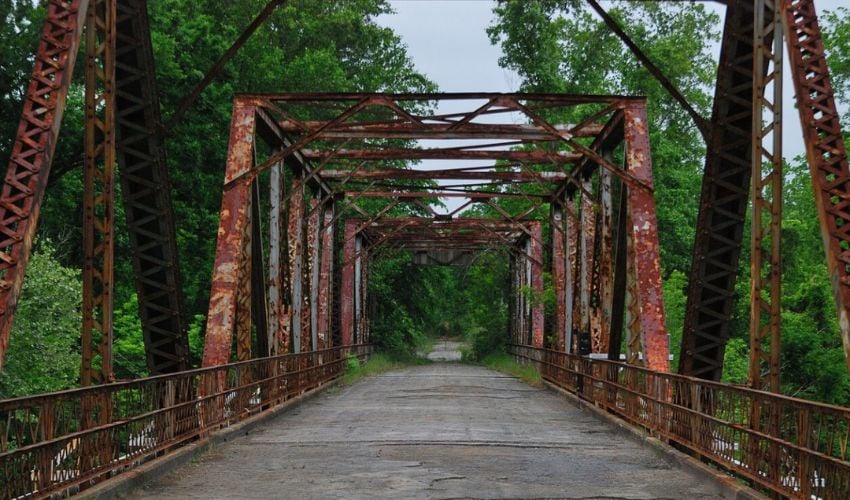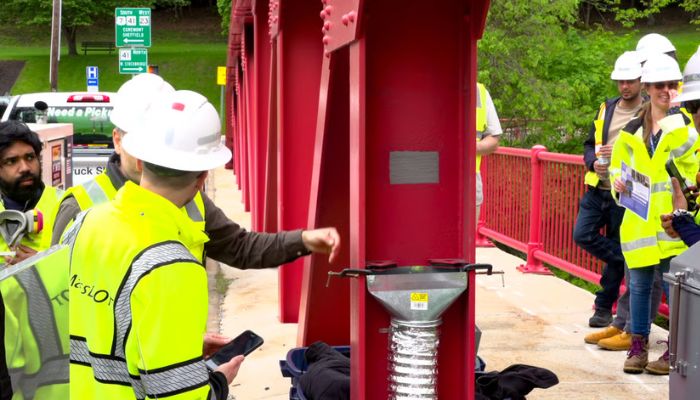Repairing Bridges with 3D Printing? UMASS Amherst Looks to Cold Spray AM

Bridge maintenance is a critical yet labor-intensive task, particularly due to the vulnerability of materials like steel to corrosion. According to the 2025 Report Card for America’s Infrastructure, only 49% of U.S. bridges are rated in “fair” condition, while 6.8% are classified as “poor.” Restoring these aging structures is estimated to cost over $191 billion. However, the use of innovative repair techniques could significantly reduce that figure. In response, a research team from the University of Massachusetts (UMASS) Amherst, in collaboration with the Department of Mechanical Engineering at the Massachusetts Institute of Technology (MIT), is exploring cold spray additive manufacturing (CSAM) as a promising solution to this nationwide challenge.
Corrosion is one of the leading causes of steel degradation, significantly compromising the integrity of infrastructure. In rural or remote areas, this deterioration can escalate quickly, often resulting in road closures and limited access. Compounding the issue is the lack of effective methods for detecting corrosion early and accurately assessing its impact. Additionally, many regions face financial constraints that limit their ability to carry out timely repairs and routine maintenance. Simos Gerasimidis, one of the project’s leads and associate professor of civil and environmental engineering at the University of Massachusetts Amherst, has been studying bridge deterioration for about ten years. “Any time you drive, you go under or over a corroded bridge,” Gerasimidis said. “They are everywhere. It’s impossible to avoid, and their condition often shows significant deterioration. We know the numbers.”

Researchers at the University of Massachusetts conduct final tests for the project (Image: University of Massachusetts)
The UMASS Amherst team is addressing this with their project “3D printing and Steel Structures: Innovation in Repairs.” The work involves testing CSAM to repair bridges, as well as developing 3D LiDAR scanning methods to replace visual assessments. Typically, visual assessments are time-consuming and subjective. With a 3D LiDAR scanning method, researchers can identify corrosion more precisely and develop a digital repair plan. This also allows them to identify where the repairs are strictly necessary, saving time and material. “By combining scanning with precise material deposition, we can be very targeted and say, ‘we’re going to print here and here and here and we’re going to give this bridge another 10 years of life,’ which is huge,” Gerasimidis added.
The Cold Spray Additive Manufacturing Advantage
In cold gas spraying, metal powder particles are sprayed onto a surface at high speed. These bond with the damaged parts of a component, for example, the metal girders of a bridge, and coat them. Repeated spraying creates multiple layers that restore the thickness and other structural properties of the treated area. The technology will be tested through experimental tests (tensile tests, fatigue tests and additional corrosion tests) to evaluate the effectiveness of the proposed techniques for repairing or protecting steel in corrosive environments.
CSAM has been effectively used for large applications such as airplanes, ships and submarines. Bridges, on the other hand, pose a unique problem: the 3D printer must be brought on-site. Thankfully, CSAM repairs can be made with little traffic disruption. Gerasimidis explained that they can perform CSAM while cars drive on the bridge.
A Promising Repair
The UMASS team completed a test repair in Great Barrington, Massachusetts, on the red bridge (formerly known as the “Brown Bridge”) that was built in 1949. “Now that we’ve completed this proof-of-concept repair, we see a clear path to a solution that is much faster, less costly, easier, and less invasive,” Gerasimidis said. “To our knowledge, this is a first. Of course, there is some R&D that needs to be developed, but this is a huge milestone to that.”
In a few years, the red bridge will be demolished. Then, the UMass team will take the sprayed beams back to their lab and test them. They will measure how successfully the deposited steel powder adhered to the structure in the field, comparing it to a controlled lab setting. Additionally, the team will check for further corrosion after being sprayed and determine its mechanical strength properties.
The Massachusetts Department of Transportation (MassDOT), the Massachusetts Technology Collaborative (MassTech), the U.S. Department of Transportation and the Federal Highway Administration are also collaborating on this project. Find more information HERE.
What do you think of using cold spray additive manufacturing for repairing bridges? Let us know in a comment below or on our LinkedIn or Facebook pages! Plus, don’t forget to sign up for our free weekly Newsletter to get the latest 3D printing news straight to your inbox. You can also find all our videos on our YouTube channel.
*Cover Photo Credits: Jeffrey Schreier







